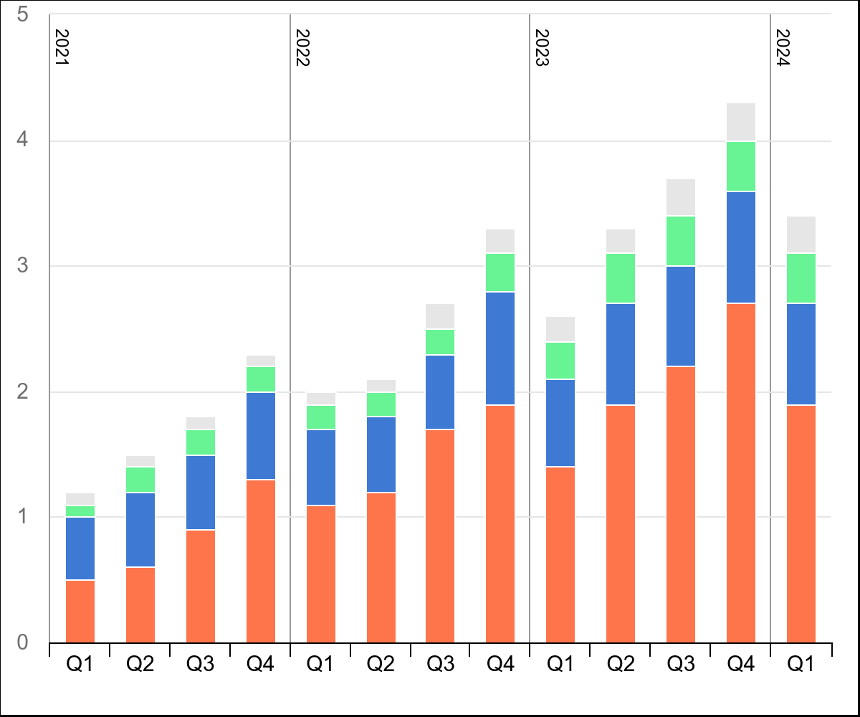IEA 2024 Global EV Outlook Sees Sunny Skies Ahead For Electric Transportation
Sign up for daily news updates from CleanTechnica on email. Or follow us on Google News!
The International Energy Agency focuses on the transition to a world powered by clean energy. The IEA publishes an annual report that identifies and assesses recent developments in electric mobility across the globe. It is developed with the support of members of the Electric Vehicles Initiative.
Combining analysis of historical data with projections through 2035, this year’s report — Global EV Outlook 2024 — examines key areas of interest such as the deployment of electric vehicles and charging infrastructure, battery demand, investment trends, and related policy developments in major and emerging markets. It also considers what wider EV adoption means for electricity and oil consumption and greenhouse gas emissions. The report includes analysis of lessons learned from leading markets, providing information for policymakers and stakeholders on policy frameworks and market systems that support electric vehicle uptake.
The IEA 2024 report notes that electric cars continue to make progress towards becoming a mass market product in a number of countries.
“Tight margins, volatile battery metal prices, high inflation, and the phase-out of purchase incentives in some countries have sparked concerns about the industry’s pace of growth, but global sales data remain strong. In the first quarter of 2024, electric car sales grew by around 25 percent compared with the first quarter of 2023, similar to the year-on-year growth seen in the same period in 2022. In 2024, the market share of electric cars could reach up to 45 percent in China, 25 percent in Europe, and over 11 percent in the United States, underpinned by competition among manufacturers, falling battery and car prices, and ongoing policy support.”
Almost 14 million new electric cars were registered globally in 2023, the IEA report says. That brings the total number of electric cars on the road worldwide to 40 million, which is close to the number forecast by the IEA in last year’s global summary report. Electric car sales in 2023 were 3.5 million higher than in 2022, a 35% year-on-year increase and more than 6 times higher than in 2018. In 2023, there were over 250 000 new registrations per week. Electric cars accounted for around 18% of all cars sold in 2023, up from 14% in 2022.

Sales Of Heavy Duty Electric Vehicles
Sales of electric buses are far ahead of other heavy duty vehicle segments, the IEA report says. Several European countries such as Belgium, Norway, and Switzerland, along with China, achieved sales shares above 50% in 2023. More than one-fifth of bus sales were electric in Canada, Chile, Finland, the Netherlands, Poland, Portugal, and Sweden. Globally, almost 50,000 electric buses were sold in 2023, equating to 3% of total bus sales and bringing the global stock to approximately 635,000 in total. This relatively low share is attributable to a lack of electric bus sales in some larger markets such as the United States and South Korea.
Sales of electric heavy duty trucks are low, given the challenge of charging them over long distances. City buses travel known routes with frequent stops, which allows them to take advantage of regenerative braking. Today, about 1% of intercity and long distance bus sales are electric. Sales of short range electric trucks are climbing, but long range electric tractors are awaiting the creation of an appropriate charging infrastructure.
Trends In Charging For Electric Vehicles
When it comes to charging for electric vehicles, the IEA report says there are almost ten times as many private chargers as public ones, with most owners charging at home. EV owners with access to a private parking space that can be equipped for charging can charge overnight, which is not only convenient but also typically takes advantage of lower electricity prices while demand is relatively low.
The availability of home charging varies substantially between regions and is linked to differences in urban, suburban, and rural populations, as well as income bracket. In dense cities, where most people live in multi-unit dwellings, access to home charging is more limited and EV owners rely more heavily on public charging. This is most apparent in South Korea, which is one of the world’s most densely populated countries and has the highest ratio of public charging capacity to EVs.
The IEA points out that in countries where 220 volts or higher is the standard for most residential and small business applications, overnight charging is easy even for electric cars with relatively large batteries. However, where 110 volts is the norm, many homeowners need to invest in upgrading their electrical service to accommodate a Level 2 charger. In some countries, that extra cost may deter some potential EV buyers.
Batteries & Materials
The growth in EV sales is pushing up demand for batteries, continuing the upward trend of recent years. Demand for EV batteries reached more than 750 GWh in 2023, up 40% relative to 2022, though the annual growth rate slowed slightly compared to 2021 and 2022. Electric cars account for 95% of this growth. The United States and Europe experienced the fastest growth among major EV markets, reaching more than 40% year-on-year, closely followed by China at about 35%. Nevertheless, the United States remains the smallest market of the three, with around 100 GWh in 2023, compared to 185 GWh in Europe and 415 GWh in China. In the rest of the world, battery demand growth jumped more than 70% in 2023 compared to 2022 as a result of increasing EV sales.

Chip in a few dollars a month to help support independent cleantech coverage that helps to accelerate the cleantech revolution!
Growth In EV Charging Infrastructure
Large-scale adoption of electric vehicles hinges on the simultaneous roll-out of accessible and affordable charging, the IEA says. The early adopters of electric cars have tended to live in single family detached homes with affordable and convenient access to home charging. As a result, most charging to date has been private (at home and other private locations). At the same time, public chargers have tended to be installed in urban areas, where utilization rates are likely to be higher. Looking forward, however, chargers must also be installed outside of urban areas to enable continued adoption beyond cities and suburbs.
In a 2021 survey of EV drivers in the United Kingdom, over 90% of the respondents reported having access to home chargers, whereas a 2023 study showed that only 55% of Indian consumers had such access. The build-out of charging in workplaces and publicly accessible areas will be key for increasing adoption among groups without access to home charging. Charging speed — slow or fast — is also an important consideration for consumers looking to switch to electric vehicles, especially if they are intended for driving long distances. Charging services should also be easy to use, reliable, and transparently priced. Furthermore, ensuring interoperability is important when making investments in charging infrastructure and services, so that a wide customer base is able to benefit.
The IEA predicts the global number of public charging points will exceed 15 million by 2030, a fourfold increase compared to 2023. By 2035, this number reaches almost 25 million, a sixfold increase relative to 2023.
The Effect Of Electric Vehicles On Emissions
We tend to lose sight of the fact that the primary reason to electrify transportation, whether cars, trucks, buses, trains, ships, airplanes, forklifts, excavators, or last mile delivery vehicles is to lower the amount of carbon emissions we humans spew into the atmosphere. There are any number of groups that are opposed to electrification of transportation — fossil fuel companies and auto dealers being the most prominent. But in the final analysis, if we don’t do this, our goose is cooked, literally and figuratively.
Road transport electrification at the global scale is expected to unlock substantial emission reductions in the coming decades, according to the IEA. While it will be important to keep in check any additional emissions coming from electricity generation for EVs, these emissions will be more than outweighed by the emissions reductions resulting from a switch to electric. The carbon emissions avoided by using electric vehicles rather than those powered by internal combustion engines will amount to more than 2 billion metric tons in 2035. Additional emissions from electricity generation for electric vehicles will add about 380 million tons of carbon dioxide to the atmosphere, but that means electrification of vehicles will result in a net saving of 1.8 billion metric tons of carbon dioxide in 2035.
The choice is ours. We can continue living in the past or face reality and take appropriate steps to prolong human life here on our little blue marble at the far edge of a minor galaxy for as long as possible. We are in a leaky lifeboat. Some want to bail while others want to drill holes in the hull because they can make money doing so. It is up to us to decide which is the wiser course.
Have a tip for CleanTechnica? Want to advertise? Want to suggest a guest for our CleanTech Talk podcast? Contact us here.
Latest CleanTechnica.TV Video
CleanTechnica uses affiliate links. See our policy here.


